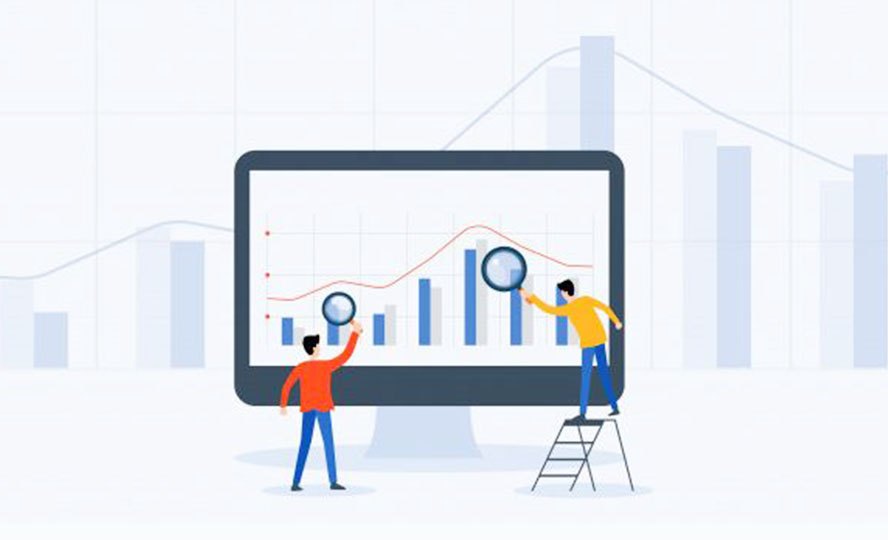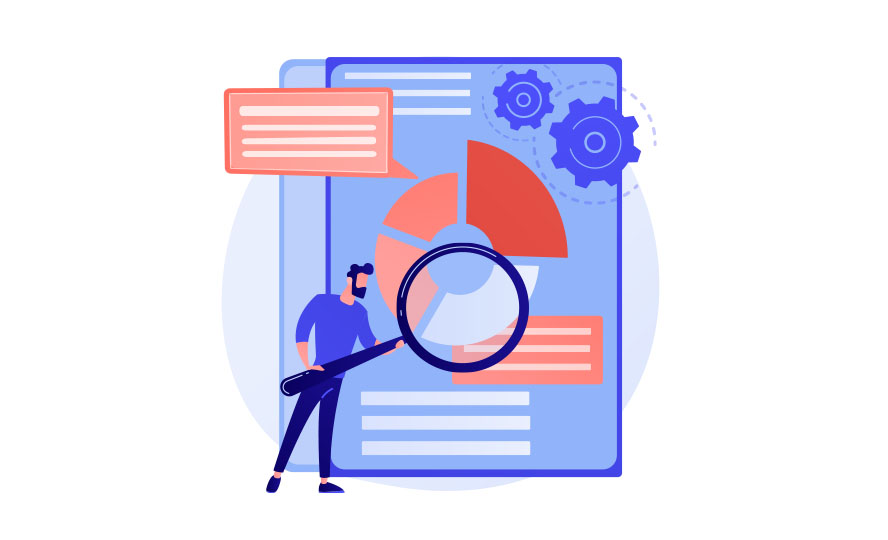
Industry-Standard Research Methodologies
Get insights into how we bring you the trending market analytics and research reports by executing 360-degree market research methodologies.
At AnalystView Market Insights, we have a dedicated team of research professionals and industry experts to formulate the blend of research methodologies and an exclusive set of techniques to come to critical data reports. Some of the standard methods we rely on are:
Preliminary Data Mining
To begin the research for a particular industry or field, we employ data interrogation methodologies. The data mining process helps to minimize deviance, generate meaningful estimates, and make the most accurate forecasts possible. We conduct a comprehensive research study to collect information using the following research methods such as:
Secondary Research
Secondary research is the initial phase of our study, where raw market data is gathered and collated on a broad front.
The big data is collected from nominated
public resources which are then analyzed and validated to draw potential marketing strategies to discover business growth. Now, the collection of data is continuously filtered and verified to get a better overview of the information concerning the prevalent market scenarios.
The various public sources of information for Secondary Research are:
- Company’s annual reports, SEC filings, websites, broker & financial reports, and investor presentations to understand the competitive scenario of the industry
- Scientific and technical articles
- Regional Governments’ statistical databases for macro-analysis


Paid Databases
We walk an extra mile for our clients by utilizing paid databases available to us along with the Information from relevant studies to generate trending market research reports for our report store.
For this, we have partnered with popular corporations and media firms like Bloomberg, Dun & Bradstreet, and BusinessWeek to equip our team with paid databases. We realize the importance of top players in the market, their company profiles, the market landscape, necessary financial data, technical aspects, commercial aspects, and other valuable insights both on a regional and global level to perform the 360-degree research from the supplier’s end and the consumer’s end.
Primary Research
Our in-house industry specialized research experts adapt the Primary Research methodology to study the market dynamics and trends to report the microscopic details for the business or industry.
The crucial data collected during the initial phase of the Secondary Research method is validated by Key Opinion Leaders (KoL’s) operating in the respective markets through phone calls, emails, and web-based survey responses during the Primary Research. Our Primary Sources also include manufacturers, distributors, consumers, or end-users who are directly connected to the product, service, or field of study. Our in-house industry experts gather this raw information from these sources to gain insights based on their expertise and experience in the relevant field.
They host a survey, send a questionnaire or interview them on a requirement basis to validate data accuracy, analyze current facets of the market, and predict the future expectations concerning manufacturers’ and buyers’ perspectives.


Data Synthesis & Analysis
In the Data Synthesis stage, our team analysts utilize the collected data and research articles to study the historical and forecast trend on the subject.
We count on the year-on-year (YOY) parameter to determine the forecast patterns for a given industry. The primary and secondary research results from the previous stages allow data projection to predict market performance under microeconomic and macroeconomic parameters. Here is the research approach we follow for Data Synthesis and Analysis:
- Market drivers and restraints along with their current and expected impacts
- Technological scenario and expected developments
- Trends in consumer behaviors
- End-user industry trends
Top-Down Approach
We encounter a Top-Down approach when the research study is about a new product/service ready to be launched in the market.
The process starts by studying the market revenue at a global scale which is then dropped to the regional/country level. Furthermore, it is narrowed down to segment and sub-segment revenue estimation and analyzing key player’s global market revenue.
In this approach, paid and public databases are used to a greater extent to study the market conditions, product flow, and penetration models. To forecast the market performance of any product/service we use the regression multivariate analysis technique. We lead primary interviews and also check with vendors to calculate the variable impact analysis.
Bottom-Up Approach
The Bottom-Up Approach involves studying the consumer demand for a product across the globe or region depending on 360-degree market analysis.
To gain accurate insights, variable analysis and primary interviews are conducted for data validation. At this stage, we also use the paid databases and annual financials of the company to understand revenue-based estimation. Next, we
go by the commodity flow approach wherein, our analysts identify the segment-specific revenue of key companies.
Supply Side
On the supply side, we analyze annual company reports, presentations by investors, and Hoover's database.
At this stage, we identify the leading market players to understand your business competitors at a deeper level. We predict the upcoming market conditions for you to analyze the distribution networks, market initiatives, and trends.
Demand Side
For the demand side approach, we identify the hierarchy from parent markets followed by the related markets.
Our research experts analyze the relevant revenue to these markets by using segment penetration analysis. We consult industry experts to forecast the demand side based on this variable analysis. Moreover, we use advanced machine learning algorithms to assign weights to all the market dynamics and quantify their impact on market growth. It helps to collate the essential market data to estimate the project scope.
We utilize algorithms such as regression, correlation, and decision tree to derive the desired output. Using these algorithms, we can cut through the clutter and derive highly detailed forecasts, profound knowledge of product demand, and so much more. These collected data points are carefully filtered, analyzed, compared, and presented in an easy way to develop an accurate research study. Furthermore, all collected data is subjected to undergo an exhaustive review process at the regional level, the country level, and the global level.
Market Formulation
As the name suggests, we formulate the market insights based on the collected data and analysis.
We provide a clear written analysis of the market conditions presenting detailed information of market segments such as market drivers, market restraints, and market opportunities. These insights offer meaningful information on different incidence/prevalence data, consumption trends, channel dynamics, brand preference, and technology upgrades.
We add up the other crucial information from relevant awareness campaigns, a new introduction, regulatory norms, government initiatives, and an industry player’s expansion when it comes to segment-specific products. This cluster of information is substantial to produce accurate forecasts and generate the final report. The final report serves our clients as a guide to own the market dynamics and makes strategic business decisions.


Data Verification
In this stage, we conduct the final data verification process of the entire research methodology.
This is the final step in forecasting and estimation of the market research and analysis. Here the market research, data collection, data analysis, and business forecasts are finally complete to take the process further for data verification. This step aims to conclude the on-going study of market research and estimation. The method is evident that the entire process of market research study is legitimate and data reports released are supported by the current market trends and authorized sources